|
||
      |
Peer Review ::
On the shelf
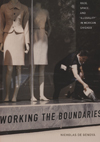 Working
the Boundaries: Race, Space, and “Illegality” in Mexican Chicago,
by Nicholas De Genova, AB’90, AM’92, PhD’99, Duke University
Press, 2005. Arguing that U.S. immigration law has branded Mexicans as the
“iconic illegal alien,” De Genova’s ethnography explores
how the dynamics of class, race, and labor influence Mexicans living and
working in Chicago. Drawing from fieldwork in local metal-fabricating factories,
community centers, and migrant homes and neighborhoods, he investigates
how deportation threats subordinate migrant workers in a “black-white”
society.
Working
the Boundaries: Race, Space, and “Illegality” in Mexican Chicago,
by Nicholas De Genova, AB’90, AM’92, PhD’99, Duke University
Press, 2005. Arguing that U.S. immigration law has branded Mexicans as the
“iconic illegal alien,” De Genova’s ethnography explores
how the dynamics of class, race, and labor influence Mexicans living and
working in Chicago. Drawing from fieldwork in local metal-fabricating factories,
community centers, and migrant homes and neighborhoods, he investigates
how deportation threats subordinate migrant workers in a “black-white”
society.
Between Two Worlds: The Inner Lives of Children of Divorce, by Elizabeth Marquardt, AM’93, MDV’99, Crown, 2005. A researcher at the Institute for American Values and child of divorce herself, Marquardt studied 1,500 young adults from divorced and intact families and disputes the notion of a “good divorce.” Family break-ups, she contends, alter the structure of childhood, compelling children to act as “little adults” and devise separate identities molded to each parent’s values and expectations.
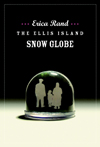 The
Ellis Island Snow Globe, by Erica Rand, AM’81, PhD’89,
Duke University Press, 2005. An “unconventional tour” of Ellis
Island and the Statue of Liberty, Rand’s study of modern tourism kitsch
uses consumer culture to analyze contemporary attitudes toward immigrant
history, sexuality, race, and global capitalism. Breaking down the assumptions
and judgments hidden in snow globes, pens, and golf balls printed with immigrant
family images, Rand argues that America doesn’t honor all heritages
equally.
The
Ellis Island Snow Globe, by Erica Rand, AM’81, PhD’89,
Duke University Press, 2005. An “unconventional tour” of Ellis
Island and the Statue of Liberty, Rand’s study of modern tourism kitsch
uses consumer culture to analyze contemporary attitudes toward immigrant
history, sexuality, race, and global capitalism. Breaking down the assumptions
and judgments hidden in snow globes, pens, and golf balls printed with immigrant
family images, Rand argues that America doesn’t honor all heritages
equally.
Master Class: Lessons from Leading Writers, edited by Nancy Bunge, AM’66, University of Iowa Press, 2005. Bunge presents excerpts from interviews with 29 accomplished authors, including Allen Ginsberg, Larry McMurty, Scott Turow, and Anne Waldman, for insight on writing philosophies, teaching methods, and the daily battle to put pen to paper. Their most common advice to aspiring writers? Trust yourself.
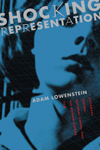 Shocking
Representation: Historical Trauma, National Cinema, and the Modern Horror
Film, by Adam Lowenstein, AM’94, PhD’99, Columbia University
Press, 2005. Combining film and trauma studies, Lowenstein investigates
how groundbreaking horror filmmakers Georges Franju, Michael Powell, Shindo
Kaneto, Wes Craven, and David Cronenberg challenged conventional perceptions
of national identity, history, gender, and class in the wake of World War
II, Hiroshima, and the Vietnam War.
Shocking
Representation: Historical Trauma, National Cinema, and the Modern Horror
Film, by Adam Lowenstein, AM’94, PhD’99, Columbia University
Press, 2005. Combining film and trauma studies, Lowenstein investigates
how groundbreaking horror filmmakers Georges Franju, Michael Powell, Shindo
Kaneto, Wes Craven, and David Cronenberg challenged conventional perceptions
of national identity, history, gender, and class in the wake of World War
II, Hiroshima, and the Vietnam War.
The Drug Trial: Nancy Olivieri and the Science Scandal that Rocked the Hospital for Sick Children, by Miriam Shuchman, AB’80, Random House Canada, 2005, paperback 2006. Psychiatrist and medical journalist Shuchman investigates the 1998 drug-trial controversy that pitted physician whistleblower Nancy Olivieri against Canada’s largest drug company, Apotex. The exposé shows how perils of the scientific research and peer review system can lead physicians and researchers to fail those they wish to heal.
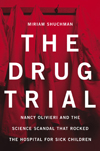 Darwin:
The Indelible Stamp; The Evolution of an Idea, edited by James D.
Watson, PhB’46, SB’47, Running Press, 2005. Containing On
the Origin of Species, Voyage of the Beagle, The Descent of Man, and
The Expressions of Emotions in Man and Animals in their entirety,
this anthology traces Darwin’s developing theories of evolution. Watson,
a DNA research pioneer, discusses how Darwin’s thought influences
modern genome studies in an introductory essay for each work.
Darwin:
The Indelible Stamp; The Evolution of an Idea, edited by James D.
Watson, PhB’46, SB’47, Running Press, 2005. Containing On
the Origin of Species, Voyage of the Beagle, The Descent of Man, and
The Expressions of Emotions in Man and Animals in their entirety,
this anthology traces Darwin’s developing theories of evolution. Watson,
a DNA research pioneer, discusses how Darwin’s thought influences
modern genome studies in an introductory essay for each work.
The Greatest Generation Comes Home: The Veteran in American Society, by Michael D. Gambone, AM’89, PhD’93, Texas A&M University Press, 2005. The transition of 16 million World War II veterans back to U.S. civilian society was no small feat. Gambone’s social and military history chronicles the post-1945 veteran experience, from medical recovery and educational advancement to feelings of discomfort and alienation.
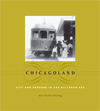 Chicagoland:
City and Suburbs in the Railroad Age, by Ann Durkin Keating, AM’79,
PhD’84, University of Chicago Press, 2005. While most histories of
the city emphasize the Loop’s bustling streets and ever-expanding
skyline, Keating focuses on the lesser-known 19th-century farm, suburb,
and industrial regions surrounding Chicago. Driving tours, narrative histories,
and more than 100 photographs and maps illuminate 230 neighborhoods and
communities of the historic metropolitan landscape.
Chicagoland:
City and Suburbs in the Railroad Age, by Ann Durkin Keating, AM’79,
PhD’84, University of Chicago Press, 2005. While most histories of
the city emphasize the Loop’s bustling streets and ever-expanding
skyline, Keating focuses on the lesser-known 19th-century farm, suburb,
and industrial regions surrounding Chicago. Driving tours, narrative histories,
and more than 100 photographs and maps illuminate 230 neighborhoods and
communities of the historic metropolitan landscape.